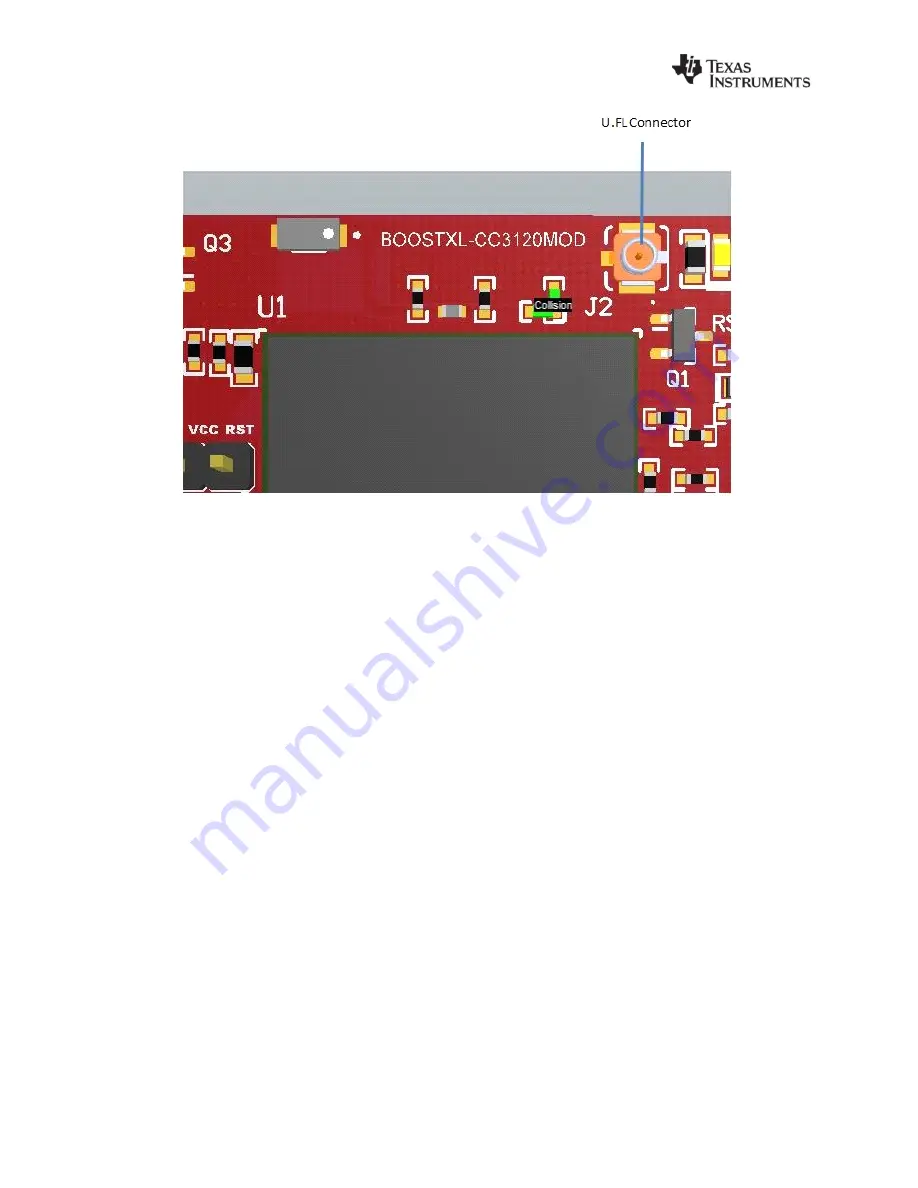
Figure
7
‐
5:
U.FL
Connector
7.5
Connecting
to
PC
Using
the
CC31XXEMUBOOST
7.5.1
CC31XXEMUBOOST
7.5.1.1
Overview
The
CC31XXEMUBOOST
is
designed
to
connect
the
BoosterPack
module
to
a
PC
using
a
USB
connection.
This
updates
the
firmware
patches,
which
are
stored
in
the
serial
flash,
on
the
BoosterPack;
and
in
software
development
using
SimpleLink
Studio.
The
board
is
also
used
for
measuring
the
RF
performance
using
a
software
tool
named
RadioTool.
7.5.1.2
Hardware
details
Figure
7
‐
6
shows
the
CC31XXEMUBOOST
board.













































